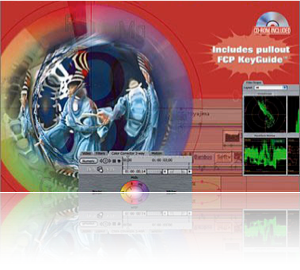
PHOTOSHOP TITLES: Updated
Because the titler was so weak in earlier versions of Final Cut, many people, myself included, took to using Photoshop as the FCP titler. What a great titler it is, infinitely malleable, with many additional elements, like banners and bars and gradients, which are more difficult to construct in FCP than in this great graphics application. Anything you can imagine is possible. I use it often, particularly for lower thirds, but also for working with still images that need to be incorporated into a project.
What you should first know about working in PS is that you should only use RGB color space — no CMYK, no grayscale, no indexed color. They don’t translate to video.
One problem with using PS is the issue of square versus non-square pixels. Because PS is a computer program, it works in square pixels exclusively, while most video uses the CCIR601 or rectangular pixel. This presents a minor problem. The important point is to understand how FCP handles still image files. It handles different sized images in different ways. Single layer files, flattened files, are treated one way, multilayer Photoshop files or PS files with transparency are treated another way. Here's how you should work with multilayer Photoshop files or files with Photoshop transparency.
If you’re working with older versions of Photoshop in the DV format using CCIR601 pixels at 720x480, create your PS files at 720x540. If you’re working in standard CCIR601 format, 720x486, then create your PS files at 720x547.
After you’ve made your graphic, go to Image Size and, making sure Constrain Proportions is deselected and Bicubic is selected, change the height of the image to 480 or 486, as appropriate.
This squashes the image down, distorting it, changing it to a file that FCP recognizes as using CCIR601 rectangular pixels.
Save your file. I save out a separate PS file that has been converted to CCIR601 format and keep the original so I can correct the typos I usually make.
When you bring a PS file that’s 720x480 into FCP, the editing software assumes it’s been prepared for use in a DV sequence.
When placed in a DV sequence, the image will work perfectly and be treated as a non-square pixel image.
The import of a Photoshop multilayer file is based on the current setup within Final Cut. If you’re creating your multilayer Photoshop file for DV make sure you have DV as your setup before you import it. If you have HD or some other setting Final Cut will use that to establish the correct frame and pixel aspect for the image. Similarly if you make an HD image in Photoshop make sure you have the correct HD setting selected in your Easy Setup before you do the file import.
Copyright © 2004-2008 South Coast Productions